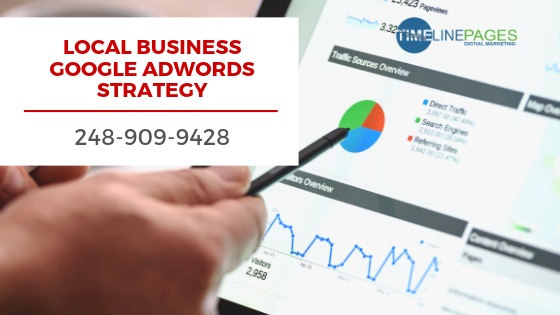Local Business Google Ads
When local business advertisers go to Google Ads, they repeat the same campaign process over and over again: location targeting is within the customer’s likely range. If you’ve been using Google’s Ad strategy continually, your results may not be worth boasting. This is a number of different strategies for local sponsors, such as Ad extensions, re-marketing, and more. Most local businesses miss out on features that have been added over the years. If you deploy these strategies, you have the opportunity to steal some cheap clicks.
Here are two powerful Google Ads strategies to get more local sales for your local business.
1. Use Local-Friendly Ad Extensions
Ad extensions are the key to improving Google Ads. Wow, it sounds very bad. Key benefits include (but are not limited to): increase click-through rate and provide more information/background without setting a character limit on the actual Ad copy. You can get extra freedom to compel someone to click on your Ad on the search network. With the Ad add-on feature, the biggest mistake people make is to load them for no reason. You need a reason to use them. Simple use of Ad extensions won’t be a huge success. We can divide Ad Extension into the more advanced extensions.
Location Extensions
You’ll need location extensions for running a local Ad. You will see a huge number of Ads running without location extensions in the local business search. According to the latest data, 76% of users searching for nearby goods/services visited local businesses in one day. Purchases are made by almost 28% of visitors. Local searches for location targeting increase by 130% annually. Be confident to use location extensions for local Ads. You can insert them directly to the extensions tab in the Google Ads dashboard. When users click on a location on an Ad, they are directed to Google Maps for navigation.
Phone Call Extensions
Google data shows that local search is dominated by mobile devices. This makes sense: people may go out, look for things to do, or find the location of the store. The usual practice is to refer to this business as more information. Setting up a phone extension is an easy way to generate more traffic if your staff can always answer calls.
Affiliate Location Extension
Affiliate location extensions are just like they sound: extensions on search Ads that include affiliates with products. Then, affiliate location extensions can make a huge success for your business with clicks. Sometimes people don’t want to wait for the delivery of an online store. The culture of “needs now” is booming (Amazon, Postmates, etc.). Even if you don’t have a physical store, you can sell your products locally in the store to make sure your retailer continues to order from you.
Dynamic Sitelinks
Dynamic site-links are the essence of crops. Essentially, Google chooses a site extension for your Ad based on the searcher’s intent using AI and previous search + site visit history.
Dynamic site-links appear as:
This sitelink is focused on conversion and is the center of dynamic sitelinks. By linking deep into your site, site-links are contextual and can push users to the sales page faster. Of course, you can run site-links yourself and manage each Ad that you run locally. But these will automatically complete the work and may perform better. Run them for a few weeks and evaluate performance. If they don’t achieve the desired results, create your own site-links and focus on the operational benefits, not just the links to more pages.
2. Run “Local Search Ads” and Use Bid Modifiers
For real local sales, local search Ads are one of the best features. However, they do need some setup work. Here’s how they work:
Local searchers looking for businesses on Google will first show results on Google Maps: These local search Ads work slightly differently than general search Ads. Local search Ads don’t link to your site like search Ads but instead, link directly to pages on Google that give users more information about the store. Store opening hours, location/address, comments, photos, etc. Brand advertising has a far-reaching impact and leads to more sustainable growth. Google search Ads are primarily used for lead generation. When you rely on lead generation, you will perform a high-intention search, but you will have to pay a large fee. And you will end up competing with competitors who focus on potential customers. If Google Search Ads is your only form of online advertising, you’ve definitely missed it. Most importantly, by following the setup process, you can show Ads directly on Google Maps:
This will help you capture direct searches on Google in the browsers and searchers of Google Maps itself.
To get local search Ads, you’ll need to:
- Place location extensions on your Google Ads
- Create or refresh your Google My Business page (relevant information needs to be updated)
- Optimize your location-targeted bids
- Optimize keywords for location
To optimize your GMB (Google My Business) list, go to the GMB and make sure to include all the context and related information the searcher needs: multiple locations, phone numbers, hours, product categories, and more. Once you’re done, you can optimize your bids for location targeting. The idea here is to focus your bids on a radius or location closer to your business. While it’s wise to target a wide radius near the store, it’s wise to adjust your bids to focus more on closer traffic.
This gives you the double advantage of being able to locate a wider range of locations but concentrates most of your money on the most likely candidates. Please feel free to contact Ranam Kazziha at Timelinepages (248) 909-9428 for more information about PPC for your Google Ads Campaigns.


Comments are closed.